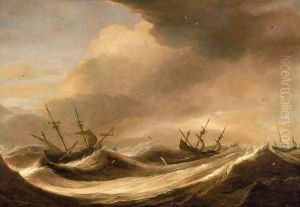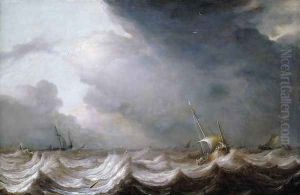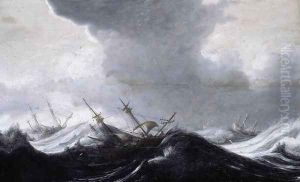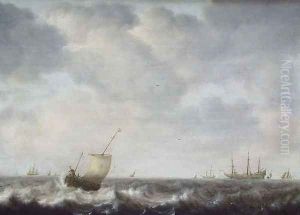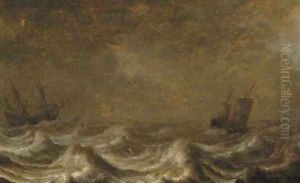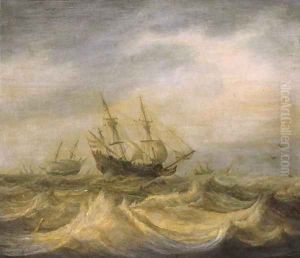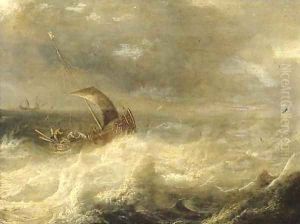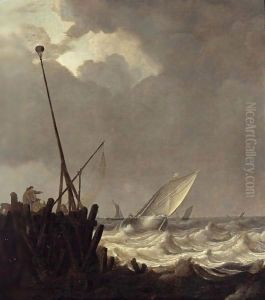Pieter the Elder Mulier Paintings
Pieter Mulier, also known as Pieter Mulier the Elder to distinguish him from his son Pieter Mulier II, was a Dutch Golden Age painter, born around 1637 in Haarlem, Netherlands. He was also commonly known by the nickname 'Cavalier Pietro' or 'Tempesta', which he acquired due to his dramatic seascapes characterized by tumultuous skies and seas.
Mulier came from an artistic family, his father being the painter Pieter de Molijn. He likely received his initial training from his father, which was common practice at the time. Although there is not much documented about his early life, it is believed that his work was influenced by Dutch marine painters such as Simon de Vlieger and Jan Porcellis, who were known for their realistic portrayal of sea and sky.
The artist's career was marked by his travels, which significantly influenced his style and subject matter. Around the 1650s, Mulier moved to Italy, where he was exposed to the works of the great Italian masters. His stay in Italy is evident in his paintings, which began to incorporate Mediterranean light and coastal landscapes, as well as Italianate features—a fusion of Dutch marine painting techniques with the Italianate taste that was popular among collectors at the time.
Mulier returned to the Netherlands in the 1670s and settled in Amsterdam. It was during this period that he produced most of his known works. His seascapes often depicted ships in distress, shipwrecks, and naval battles, capturing the raw power and emotion of the sea. His use of dramatic lighting and intense, stormy atmospheres set his work apart and contributed to his nickname 'Tempesta'.
Despite his evident skills and the quality of his paintings, Pieter Mulier the Elder did not achieve significant fame during his lifetime. It was only posthumously that his work gained greater recognition, particularly among collectors and art historians who appreciated his unique contributions to Dutch Golden Age painting.
Mulier's death occurred in Milan, Italy, in 1701. His legacy continued through his son, Pieter Mulier II, who was also a painter and is sometimes confused with his father due to their shared name and profession. Today, Pieter Mulier the Elder's works can be found in various art collections and museums, appreciated for their dynamic composition and ability to capture the spirit of the sea.
